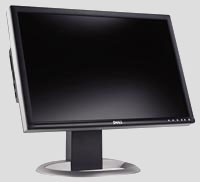

|
|
|
||||
 |
|
 |
|||
|
1. The monitor is turned OFF or the cables are disconnected. This could happen at any time during the lifecycle of the computer. Or maybe the system has gone into power conserving mode. Perform the following checks:
2. A component in the computer (such as a graphics card) may have overheated. In older computers, the fans were very powerful (remember the loud computers of yesteryears?). Now the manufacturers assume that computers sit in air-conditioned comfort all day. So they have reduced the power of these fans that are used to cool the hardware. Follow these procedures to see if that is the problem. The dreaded death-screen  a. Uninstall all recently added hardware. b. Try to restore the system to a previous restore point c. Reboot the system and return to a previous stable configuration if possible d. Remove all external peripherals (printer, cameras, scanners, etc) and connections until the computer returns to normal.
5. Bad video/graphics card. At this point, if your computer is still under warranty, its time to call for help. If not, you can get a computer geek to come to your house (it is cheaper to take your computer to their store) or try to fix the problem yourself. a. Before you re-install the operating system, check out http://support.microsoft.com/kb/312369/ b. Try to upgrade the current operating system by inserting the CD-ROM and choosing "Upgrade" in the "Installation Type" box and then click next c. Continue as detailed in http://support.microsoft.com/kb/315341/EN-US/ to complete the upgrade. d. If there were patches or updates to the previous version of the OS that fixed booting problems or missing files, then the computer should be fixed and good to go. If not, repeat with step e e. Alternately, to re-install the OS, when the message "Press any key to boot from CD" appears, tap the spacebar. f. Press ENTER to setup XP on the computer (fresh start- all setting go back to default) g. On the License screen, press F8 to agree to the license agreement. h. Select your current installation and press R to repair the installation. 9. Hard Disk Crash. This is one of the major reasons for black screens. A new computer will run reasonably well for about 2 - 3 years. After that, we'd better take precautions to manage our information in case of a disk crash. Backups are handy in case we need to re-install or replace a hard disk. To check if it's the hard disk, do the following: a. Turn the computer on and listen to see if the fan is running. b. After doing all the checks above to see if the peripherals (especially the monitor) are in good working condition, restart the computer again 10. Motherboard Problems. a. Open the chassis. Turn the computer on and verify that the CPU fan and the power supply and the fan are running. If not, make sure that the connections are tight and replace the power supply. b. Shutdown the computer and let it cool down. Unplug all cables from power sources. c. Closely examine the mother board and see that it is NOT in contact with the computer case. d. Removed and re-install your DRAM e. Remove the CPU and re-install it. f. Reset your BIOS to the default configuration following the motherboard's manual instructions. g. Make sure that you have replaced every item that you had removed from the chassis, close it and try to start it up h. If none of the above works, its time to see professional help! Notes: Computers seem to run forever, but only when it crashes do we think of how many things we could've backed up and how many restore points we could've saved! Periodically, do the following when our computers are in top running condition: a. Make backups regularly b. Schedule daily restore point creation. c. Make a boot disk (see http://support.microsoft.com/kb/314503 for instructions for XP) d. Make copies of your favorite files and software e. Create DVDs of your favorite photos and videos. f. Save important financial/tax information on CDs etc. g. Store copies of your favorite music on CDs or export them into other media. h. Install Recovery console so that it may be used when computer crashes! http://support.microsoft.com/kb/307654 i. Make sure that your computer has updated anti-virus software and spyware. This will detect any attempts to install viruses that could destroy our entire system in one second! j. Make sure that you place the computer in a well ventilated room to avoid overheating.
|
|
|||||||||||||||||||||||||||||||||||||
| Home l Help l Privacy Policy l User Agreement l About Us l Contact Us l Link to Us |